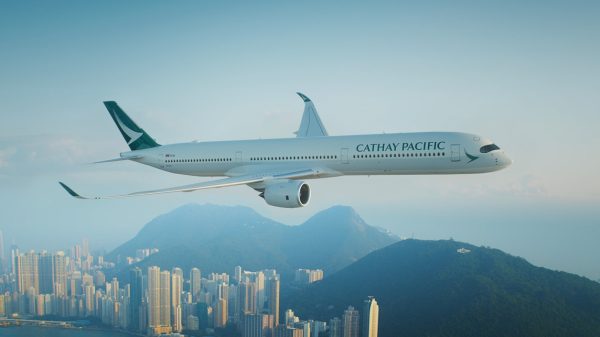HONG KONG 19 September 2022: Cathay Pacific says its traffic figures for August reflect the positive impact of adjustments to the Hong Kong government’s travel restrictions and quarantine requirements, notably the mandatory hotel quarantine arrangement for inbound travellers.
Cathay Pacific carried 253,907 passengers last month, an increase of 87.6% compared to August 2021 but a 91.3% decrease compared to the pre-pandemic level in August 2019.

The month’s revenue passenger kilometres (RPKs) increased 82.7% year-on-year but were down 86.1% versus August 2019. Passenger load factor increased by 22.2 percentage points to 68.6%, while capacity, measured in available seat kilometres (ASKs), increased by 23.5% year-on-year but decreased by 83.8% compared with August 2019 levels. In the first eight months of 2022, passengers carried increased by 133.5% against a 1.6% increase in capacity and a 141.9% increase in RPKs, compared to the same period for 2021.
Travel
The airline’s chief customer and commercial officer, Ronald Lam said: “We continued to see improved performance in our travel business in August. Average daily passenger numbers further increased month on month and exceeded 8,000. Passenger flight capacity increased 28% compared with July, although we still only operated about 16% of pre-pandemic levels. Meanwhile, the load factor remained high at close to 69%.
“Following the Hong Kong SAR Government’s adjustment to the hotel quarantine arrangement for travellers entering Hong Kong from 12 August, we observed an increase in inbound traffic to our home hub. This was particularly so for long-haul traffic from the US, Canada and Europe. Meanwhile, our passenger flight capacity to the Chinese Mainland remained restricted, although we were able to resume carrying passengers to Zhengzhou, Qingdao and Xiamen in August.
“Student traffic from the Chinese Mainland to the US represented a significant portion of our passenger traffic last month. On top of our existing services to New York, Los Angeles and San Francisco, we resumed flights to Chicago and Boston in August for the first time this year to cater to the strong demand. As a result, our US-bound flights managed 80% of load factors. Besides student traffic, our US routes were also boosted in the other direction by transit traffic travelling to Southeast Asia, resulting in greater connectivity from increased flight frequency.
Looking forward
Looking ahead, Lam noted that the Hong Kong SAR Government’s adjustments to the mandatory quarantine arrangements for locally based aircrew arriving in Hong Kong earlier this month. While we will continue to add back more flights as quickly as is feasible to strengthen the network connectivity of the Hong Kong aviation hub, this will still take time as we build operational readiness and undertake a substantial amount of training and aircraft reactivation.
“This, combined with other operational complexities, means that capacity can only be increased gradually over several months. As such, we are now projecting by the end of the year to be able to operate about one-third of our pre-pandemic passenger flight capacity – about double the passenger flight capacity we operated in August – and about two-thirds of our pre-pandemic cargo flight capacity. As the market and operating conditions further improve moving forward, we will aim to add back more flights where feasible.
“We expect demand to remain solid going into the fourth quarter. Transit traffic between the Americas and Southeast Asia, and India is anticipated to be strong. In contrast, traffic between Australia, New Zealand and other parts of our network is also expected to increase.
“As more regional destinations such as Japan continue to adjust their inbound travel policies, we will continue to monitor demand and adjust our passenger flight capacity accordingly. We intend to add about 200 pairs of passenger flights in October, primarily to regional destinations such as Osaka, Seoul (Incheon), Bangkok, Kuala Lumpur and Manila, and also to long-haul destinations such as Vancouver, Sydney and Melbourne.







